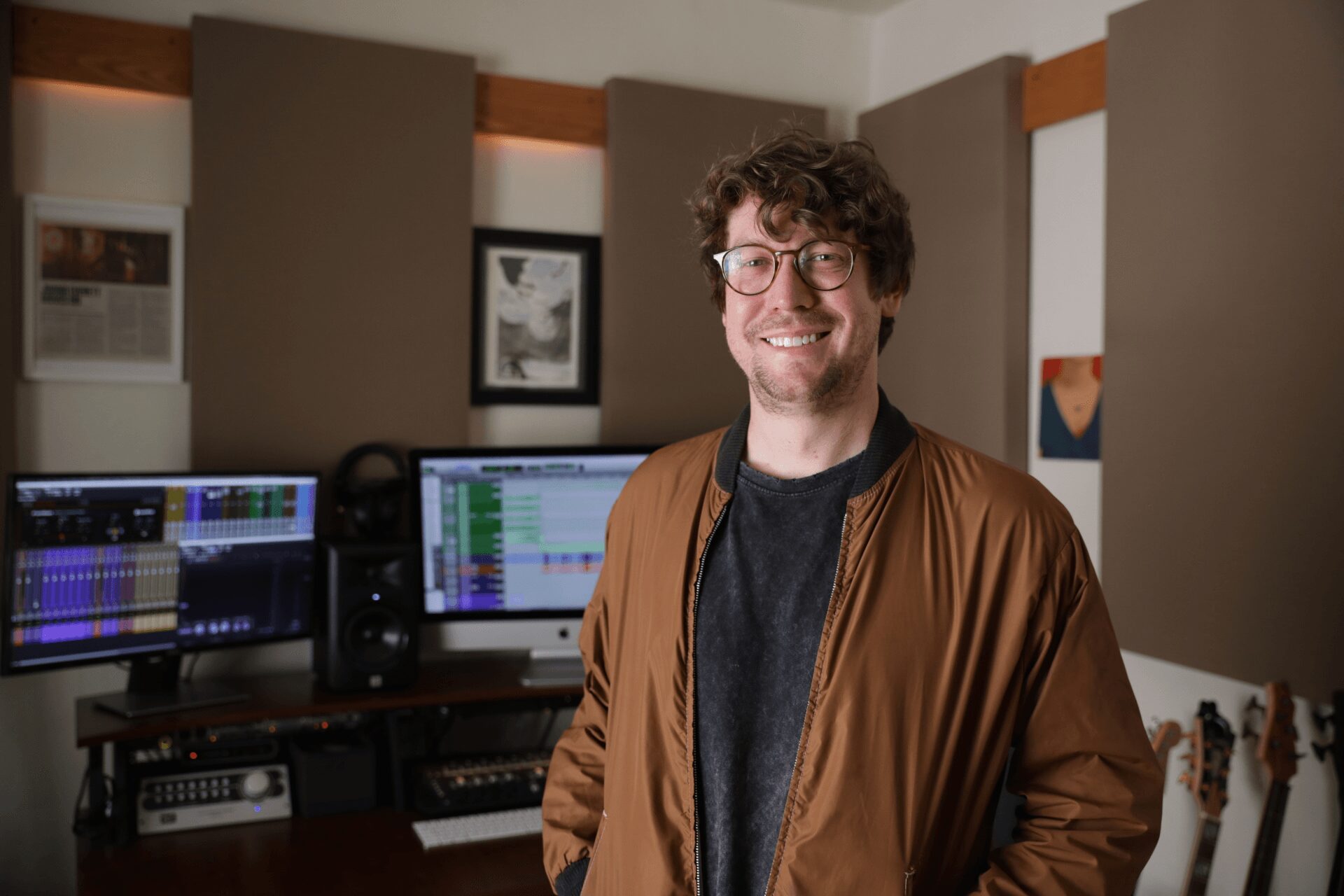We’re excited to introduce you to the always interesting and insightful Chase Everett. We hope you’ll enjoy our conversation with Chase below.
Chase, thanks for joining us, excited to have you contributing your stories and insights. Have you been able to earn a full-time living from your creative work? If so, can you walk us through your journey and how you made it happen? Was it like that from day one? If not, what were some of the major steps and milestones and do you think you could have sped up the process somehow knowing what you know now?
I’ve been invovled in audio post for film for 15 years, and have been making a living from it for the last 12.
Being the son of a music producer, recording engineer, and musician, I’m fortunate that I was raised in the recording studio and immersed in that creative environment as long as I can remember. I learned a lot about recording and mixing by shear osmosis but I started to independently take on my first gigs mixing films as a sound designer in college working on student films, and usually for free. I got my start by simply loving the process.
For my first few film projects, I was actually hired for original score. The production audio from set on these films was in such rough shape that I didn’t want my music to accompany totally raw and unedited sound, so the first step in my process was to completely edit and mix the entire film first. I had zero training or education in this craft and was winging it entirely for the first year. I had “invented” foley, adding background sounds and field recordings, ADR, etc. before I realized that these techniques were standard practice for audio post for film. Coming from a music production studio, I had never really considered these things before. I’m not sure if that’s impressive or embarrassing, actually. Either way I discovered that I like doing sound design and mixing a lot more than scoring, so I made that my main focus.

Awesome – so before we get into the rest of our questions, can you briefly introduce yourself to our readers.
My name is Chase Everett, and I’m a sound designer and re-recording mixer for film.
When a film is done shooting (production), it then enters post production. Once the video editor is finished with their cut of the film, it then goes to someone like me to finish the overall sound of the project. There are many aspects to audio post production for film, and I’ve done them all. On a typical film, I will edit and mix the dialogue, add immersive backgrounds and ambiences, create and add sound effects, create additional textures and moods with sound, and mix everything together to create a final audio track for a film, show, documentary, or advertisement.
You are given a very limited amount of sound to work with from production, so a lot of what you hear in a professionally mixed film is artificial and added in post production. This is my world. I’m obsessed with every film I mix, and I work to ensure the sound is fully supporting the images and story on screen. There are a lot of mixing tricks to make a horror scarier, a comedy funnier, a documentary more compelling, and most of these audio elements and mixing techniques are playing subconsciously and transparent to the viewer. A movie simply looks better when it sounds better. It’s often the case (but certainly not always) that you know when the sound designer and/or re-recording mixer has done a good job when nobody notices the sound.
I’m known for bringing a lot of clarity and detail with sound. I normally add a lot, and the resulting mix is larger-than-life and cinematic. I have a deep understanding of each film and I come up with creative solutions to deliver what is needed sound-wise to be effective and impactful to the audience.

Can you tell us about a time you’ve had to pivot?
I have always maintained my independent mixing career over the last fifteen years, however I have worked a number of studio jobs in Los Angeles as my 9-5 over the last ten of those years. My last job was at Netflix Animation, where I co-founded the audio department with the then-director of post production and remained the recording engineer and sound editor for five years. I worked primarily as a recording engineer for Netflix, however recording isn’t my main passion. In January of 2024, I left Netflix to pursue my main interest of sound design. It was not easy to leave the comfort of such a gigantic studio with a steady and guaranteed flow of work, but it was necessary to fully commit to what I consider to be the thing for which I have the most talent. It was daunting for the first couple months, but I’m very happy I took that risk.

What do you think helped you build your reputation within your market?
I’m not entirely sure, but I would guess that nearly everyone I’ve ever worked with seems to be pleased with my work. I know this because they tell me, but also I tend to keep a director or producer as a client once I’ve worked with them the first time. I deeply and genuinely care about each film I mix, because I consider that film’s mix to be mine. There’s a personal element to it, and from that comes teamwork in which we are all working toward a common goal. I care, and I think that shows.
Contact Info:
- Website: https://chaseeverettsound.com/
- Instagram: https://www.instagram.com/chaseeverettsound/
- Linkedin: https://www.linkedin.com/in/chase-everett-1ba45813b/
- Other: https://www.imdb.com/name/nm6690842/

Image Credits
Laura F. Izuzquiza, Paul Vu, Chandler Ferriss, Robby Piantanida


